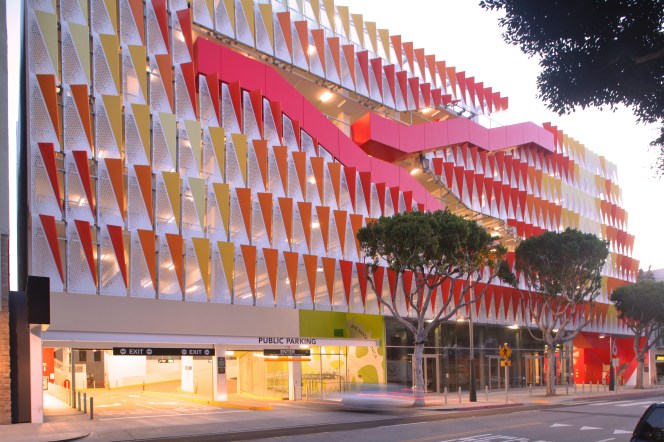Parking is a hot topic in seemingly progressive Santa Monica - with a second reading and adoption of an ordinance scheduled to go before city council today to raise downtown parking rates. The March 6, 2018 staff report referenced in the ordinance notes that parking pricing is one of the most important ways to manage a limited resource - the goal being to find the parking pricing point that maximizes utility. That’s a fancy way of saying, if the city charges a hundred bucks an hour for parking, a lot of parking spots will remain empty but if parking is only ten cents an hour, everyone will just hog spots and there will never be any spaces available.
What these reports and parking studies fail to mention is that Santa Monica City employees are not only exempt from the policy changes, but are currently entitled to free parking. There are ~2,200 full time city employees - that means on any given day, a significant portion of Santa Monica’s limited parking pool can be unavailable to residents, visitors, and businesses.
The ordinance should be modified to explicitly require that city leadership (executives, directors, and even city council) pay standard public rates for parking. This change would ensure that policy makers behave in ways that are consistent with the city’s values and have ‘skin in the game’ with the policies they develop and propose. It would also demonstrate leadership to employees - after all, if your boss and your boss’s boss drive to work alone in a car, why shouldn’t you?
Free parking is a great perk. I should know, because for 5 years I enjoyed free parking as a city of Santa Monica employee. It’s the only time an employer has covered my parking. Even when I lived in affordable, parking-abundant Atlanta, my company at the time only paid parking costs if we were in the office for extended hours. Free parking had the predictable deleterious effect on my behavior -- most of the time I drove alone to work, even though I could have easily taken the bus. Providing free and subsidized parking to city employees undermines Santa Monica’s sustainability goals, and contributes to congestion and pollution.
There is more than just an environmental cost to these inconsistent parking policies. One of the five strategic priorities of Santa Monica is “establishing a new model for mobility”. Free parking is part of an outdated, indefensible transit model. By preaching one thing to the community (parking rate increases and eliminated parking minimums) and practicing another (free council and city employee parking) Mayor Winterer and every councilmember who votes to adopt this ordinance is contributing to a perception that government is not to be trusted. This lack of trust makes it challenging to implement sustainable goals and results in community infighting when we should be figuring out how to solve the formidable challenges we face, not the least of which is catastrophic climate change.
To be fair, the city has recently implemented a parking buy-out for city employees who give up their parking spots; however, paying someone to not park is not the same as charging for parking in a city that lauds itself as sustainable. It’s easier to spend public funds to reward what should be expected behavior than it is to simply do the work. In the same vein, it is frustrating that Santa Monica is building an ultra-sustainable city hall addition that will cost at least 80 million tax payer dollars but is not willing to implement the basic building blocks of sustainable living - like charging for employee parking. This is the equivalent of spending thousands of dollars for cosmetic dental work but not bothering to brush and floss every day - it’s a needlessly painful, reckless mismanagement of public resources.
I can’t blame city staff for not volunteering to pay for their parking. It’s a fraught, political issue, and no one wants to fork over an extra $100-$200 a month to get to work. Last week a dispute over a parking spot in the city turned violent and racist - demonstrating how sensitive the issue of parking can get (not to mention the unresolved issues of racism in the community). If sustainability and transparency are values the city claims to embody, it is important that city leaders - especially those who are well compensated -- be held accountable to the parking policies imposed on the public.
I applaud Santa Monica for adopting innovative and at times controversial policies to manage parking resources and become a more sustainable community. At the same time, if Santa Monica wants to deserve its reputation as a progressive and sustainable community, then city leaders must fully live these values - by committing to using alternate methods of transportation, and by paying what the public pays for parking.
Homa Mojtabai is a Massachusetts-bred, Santa Monica-based writer and public servant. Read more of her work at her website.






